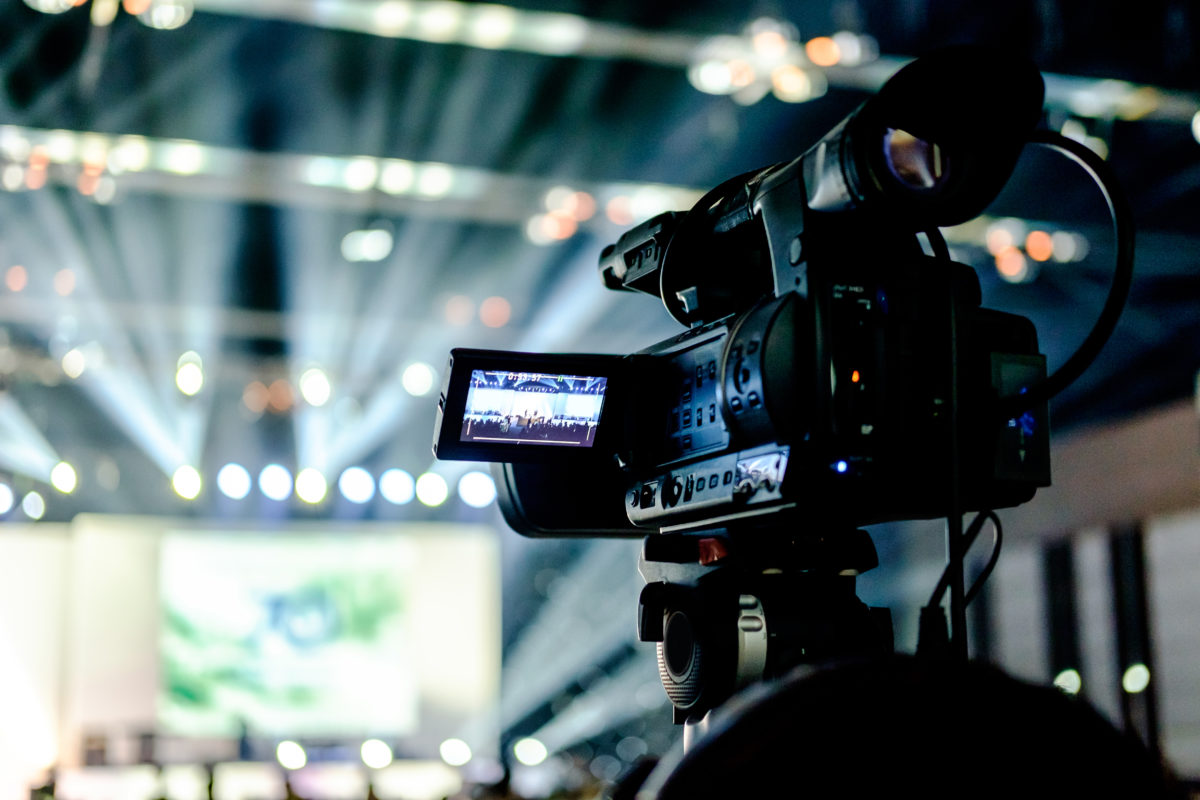
5 Pillars of Branding
What Are Brand Pillars?
Brand Pillars are a set of principles businesses can use to define their unique position in their industry. These “pillars” are broken up into five categories and define the company’s brand as well as how it sets itself apart from its competitors. Seems simple, right? Well, a business’s brand can be a lot more complex than it may seem on the surface. Most people are familiar with how a company uses a logo and other written elements like a tagline or slogan, but brands also tap into your emotions to convey their values, feelings of trust, and product or service superiority. The main brand pillars are purpose, perception, personality, position, and promotion. It takes a deep level of strategy and consistency to communicate your company’s values in a way that resonates with your target audience, and these pillars can help us zero in on what those values are.
Pillar 1 — Purpose
Purpose is the mission and foundation of your company. It’s why your company exists (beyond wanting to earn a living), and it’s what gets you up in the morning eager to work. Purpose is the answer to the biggest question your company needs to be able to answer: Why?
A few things to consider when answering this question:
- What drives the brand
- Do we solve a problem?
- How do we impact our customers, employees, and community?
- What do we want our legacy to be?
- What are we, as an organization, proud of?
Pillar 2 — Perception
Perception is how your customers experience your brand. There are a variety of brand touchpoints that give you the opportunity to shape the perception of your brand like your website, advertisements, social media, community presence, and of course, customer service. First, you must understand your brand perception in order to shape it appropriately. Try asking yourself the following questions:
- How do we think customers perceive our brand?
- Is this how we want to be perceived?
- Is our brand misinterpreted, and if so, where does it stem from?
- Are we effectively communicating our positioning?
- What do people think of our competitors?
Pillar 3 — Personality
This pillar helps describe your brand’s behaviors, emotions, and human characteristics. This will influence your brand’s voice, design, color palette, and much more. It’s your brand’s opportunity to foster that immediate connection between you and your clients or customers. When developing your brand’s personality, think about the following questions:
- How would we describe the business if it were a person?
- Do we look, act, or sound too similar to our competition?
- Is our personality authentic to who we really are?
For more information on brand personalities, check out our blog on Brand Archetypes
Pillar 4 — Position
Brand positioning is defining how your brand is perceived. Everyone thinks about a brand in a very specific way. People don’t typically think about Toyota the same way they think about Mercedes. By defining your business’s position very specifically, you can build brand loyalty among your target audience. Figure out your brand’s position by asking the following questions:
- Who is the target audience?
- Does our current position resonate with our target audience, or do we need to evolve our position?
- What are our 5-year goals versus our 10-year goals?
Pillar 5 — Promotion
Promotion is all about how you engage your audience. How are you enticing your audience to choose you over your competitors? Brand promotion differs greatly from product promotion in the sense that brand position is trying to establish a connection between your business and its customer or client that will hopefully turn into a long-term relationship. Product promotion is more of a short-lived transaction based on selling a service or product. Effective brand promotion puts your business in front of the right people, at the right time, in the right context. Think about the following questions:
- How are we currently promoting ourselves?
- When do our customers need us and where can they find us?
- How do we get our brand in front of more customers?
Now, more than ever, people are looking for a brand that stands for something and that they can connect with on a personal level. Brand pillars are the foundation of any business and are vital in creating your messaging, communication, and business strategy. By using this process, and carefully articulating your brand pillars, Mad Men Marketing can ensure that your brand will reach and affect the hearts and minds of your target audience.

What is a Social Media Advertising Agency?
Put simply, a social media advertising agency is an agency that offers comprehensive services throughout a variety of marketing channels and mediums — with a primary focus on social media, its algorithms, and its trending content.
After all, while social media is just one cog in the proverbial marketing machine, it’s coming to be, well, the primary one.
Thus, here at Mad Men Marketing, we’re currently in the midst of our transition to a full-service social media advertising agency. Here’s why:
The Rise of Social Media…
According to Statista, “in 2021, over 4.26 billion people were using social media worldwide, a number projected to increase to almost six billion in 2027.”
In other words, simply being active on social media is one of the world’s most popular activities.
And if we were to shave it down to the United States, specifically, the University of Maine has found that “72.3% of the total US population actively use social media, totaling a number of 240 million people.”
Consequently, it’s easy to see how and why the advertising landscape as a whole is changing.
After all, marketers want to be where their audience is — and these efforts have absolutely proven fruitful. For example, on Instagram alone, “92% of users say that they’ve acted in the moment after seeing a product on Instagram,” as reported by Hootsuite.
And as the community tides turn in favor of social media, so too will the marketing industry as a whole.
… And the Fall of Traditional Marketing
While television commercials, radio spots, and other physical forms of traditional content are all well and good — and still necessary, depending on the context — they are no longer the bread and butter of the marketing world.
This is because, not only do brands lack real-time interactions with their direct audience and prospective consumers, but traditional marketing is just plain inefficient in terms of making edits and adjustments as necessary.
Additionally, “traditional marketing can also be pricier,” Hubspot explains. “For instance, it can cost between $2,000-$160,000 to run a print ad. Further, you never know who you’ll reach with that investment because results are difficult to measure.”
Not to mention a reported “70% of consumers want to learn about products through content as opposed to traditional ad methods.”
So… why not do exactly that? Talk about a single statistic that puts it all in perspective.
Upward and Onward with Mad Men Marketing
Here at Mad Men Marketing, we’re not just going to help you make memes and optimize your direct engagement with your audience. Rather, as your cutting-edge social media advertising agency, we’re going to help you stay ahead of the game and on top of industry strategies!
Specifically, we…
- Produce a variety of visual content for social platforms. Whether you’re looking to produce a short and witty Instagram Reel or an in-depth behind-the-scenes look at your company for Facebook, we can do it all and more.
- Design eye-catching content that will enhance your brand identity. Our graphic designers won’t just create aesthetically pleasing carousels and banners for your business accounts, but they can also generate infographics, create your new logo, and more.
- Craft compelling copy, both long- and short-form in nature. Need a brief but convincing social media caption? No problem. Or perhaps a longer, more in-depth LinkedIn article? We’ve got you there, too.
And that’s only where it starts.
After all, here at Mad Men Marketing, we are rooted in the belief that brands should interact with their customers, not interrupt them. And social media is precisely where a majority of that magic happens today.
So, are you ready to interact? If so, contact Mad Men Marketing today by calling (904) 355-1766!

Brand Archetypes 101
Everyone loves a brand they can connect with. Whether it’s a funny commercial, celebrity spokesperson, quality product, or catchy packaging, people tend to gravitate towards brands that they can relate to emotionally. Maybe you only use Apple products, or maybe you will only grocery shop at Publix. Either way, most people have product or business preferences where an alternative just won’t do the trick.
In 1947, psychologist Carl Jung posed the theory that 12 essential characters exist in everyone’s unconscious mind, each one battling for dominance. Since then, marketing experts have utilized this theory, stating that each brand fits into one of the 12 archetypes or “characters.”
These characters are all based on universal patterns of behavior that everyone can instinctively relate to. The following human desires each match with a specific character or “archetype”:
- Power = The Magician
- Mastery = The Hero
- Liberation = The Outlaw
- Freedom = The Explorer
- Understanding = The Sage
- Safety = The Innocent
- Intimacy = The Lover
- Enjoyment = The Jester
- Belonging = The Everyman
- Innovation = The Creator
- Control = The Ruler
- Service = The Caregiver
The Outlaw
The outlaw archetype tends to be disruptive, rebellious, and combative. This is the type of brand that attracts people who like to live life on the edge, encouraging revolution and empowerment. Harley Davidson motors is a great example of an Outlaw.
Related Industries: Automobiles, Tools, & Apparel
The Magician
The Magician is a reassuring archetype that wants to make your dreams come true. They want their customers to feel like anything can happen and that one is only limited by their imagination. A perfect example of this would be Disney.
Related Industries: Entertainment, Health & Wellness, Cosmetics
The Hero
The Hero archetype is honest and brave. They have the determination and desire to make the world a better place. Businesses like Nike and FedEx lean towards the Hero archetype due to their motivation to prove their worth.
Related Industries: Sportswear, Outdoor Equipment, Trade Services
The Lover
The Lover archetype can be sensual and soothing, seeking pleasure from the experience of intimacy. Some brands that relate to this are Victoria’s Secret and Chanel.
Related Industries: Cosmetics, Wine, Food, Travel
The Jester
The Jester archetype is the playful, fun-loving optimist. The Jester is all about living life in the moment and ensuring that the people they surround themselves with are as happy as they are. Some great examples of companies that utilize this persona are M&Ms, Old Spice, and Dollar Shave Club.
Related Industries: Beer/Liquor, Child Services
The Everyman
The Everyman archetype is authentically humble and friendly. They don’t like to stand out from the crowd, so they seamlessly blend in to society. They tend to be very positive due to their need to fit into a group. Target and Ikea are both great examples of brands that fall under the Everyman category.
Related Industries: Foods, Home & Family Life, Apparel, Automobile
The Caregiver
The Caregiver archetype has a warm and caring personality. They are often thought of as maternity figures due to their need to protect others. Toms and UNICEF both have brands that make them perfect caregivers.
Related Industries: Elder Care, Non-Profits, Hospitals, Education
The Ruler
The Ruler archetype has a very refined and commanding presence. Above everything else, the ruler needs control. They can be considered intimated at times due to their authoritative actions. These brands consider themselves to be the best of the best and want their customers to feel the same way. Mercedes-Benz and Rolex are both obvious Rulers in their industry.
Related Industries: Luxury Automotive, Watch Manufacturers, Hotels, Formal wear
The Creator
The Creator Architype tends to be provocative and inspirational, always wanting to create something incredible. Imagination and creative expression are two things they value the most. Lego, Apple, and Adobe are all great examples of creator brands.
Related Industries: Arts, Design, IT, Marketing, Writing
The Innocent
The Innocent archetype is always humble and honest. They have a positive view of life due to their inherent optimism. Companies like Dove and Aveeno would be considered Innocent brands.
Related Industries: Beauty & Skin products, Fresh Food, Cleaning Supplies
The Sage
The Sage archetype is knowledgeable and understanding. They seek truth above all else and want to share their knowledge with the world. Examples of sage-like bands would be Google and the University of Oxford.
Related Industries: Media & News, Schools & Universities, Educational Businesses, Search Engines
The Explorer
The Explorer Archetype is exciting and fearless. They have very daring personalities and don’t like to be pinned down. They love to push themselves out of their comfort zones and are on a constant road of discovery. Patagonia, North Face, and Jeep are all true Explorer brands to the core.
Related Industries: Extreme Sports, Outdoor equipment, Automotive, Travel
You may be wondering if your archetype is that of your customer or that of your brand, and the simple answer is both. Archetypes represent all personalities. First, we must figure out your customers’ personalities and then tailor your brand to the archetype that is most attractive to your customer base. Define your character and begin your story!

What a Full-Service Ad Agency Can Do for Your Business
Put simply, a full-service agency will expertly collaborate with you and execute all things within the realm of marketing and advertising. This encompasses everything from strategic planning to production, social media, digital advertising, content creation, data analysis, and more.
But let’s be honest… that may sound like a lot to try and understand in one fell swoop.
And that’s why we’re here to reorganize all that into the top three specifics that are most relevant to you and your business:
#1 — Share Your Message and Strengthen Your Brand
Did you know that research indicates you can increase your revenue by 33% via consistent branding? After all, your branding is how your audience recognizes you. Thus, our art and design experts are available to help you reimagine and/or reinforce your existing brand identity so that you can accurately and consistently present yourself across your chosen channels.
What’s more, your website is integral to your branding. As customers become interested in your services and/or products, they will often — if not inevitably — find their way to your website to make the decision on whether or not to act with their money. That’s why our web developers specifically customize your online presence with your unique sales funnel and customer journey in mind!
That all being said, your brand isn’t only built on color schemes and back-end codes. That is, copywriting is integral, too!
By using a consistent voice in your written copy, you can enhance your credibility, increase your engagement, and more effectively share your brand message. Consequently, our copywriting specialists are experienced in writing for a variety of tones, mediums, and industries — because words will touch nearly everything involved in advertising.
#2 — Reach Your Target Audience(s)
When you reach out to your target audience, how can you really be sure you’re capturing their attention? Easy: You get personal.
“Our research shows that 71 percent of consumers expect companies to deliver personalized interactions,” McKinsey & Company reported. “And 76 percent get frustrated when this doesn’t happen.”
Thus, our social media aficionados are equipped to help you promote, engage, and generate leads across a variety of social media platforms. This includes organic Facebook posts, Instagram ads, and even LinkedIn and Twitter.
But what about when you want to be more than just social — you want to be seen? Well, that’s where our production department comes in! Specializing in both photography and videography, our team is available to bridge the audiovisual gap between traditional and digital media. Whether you’re looking for a radio commercial, YouTube ad, or even an on-site photo shoot, our agency has you covered.
#3 — See Results That Evolve with the Market
As we previously alluded to, there’s little doubt that consumer habits and trends have skewed increasingly from traditional media (like billboards or television commercials) into the digital media realm (including social media, search engines, and more).
And while this pivot may feel overwhelming, we assure you that it’s actually more reliable and insightful than ever.
“Brands can’t specifically analyze exactly how many consumers purchased a product because of a specific billboard advertisement,” Forbes explains. “However, they can track exactly how many people clicked on a retargeting ad, where they came from, how long they stayed on the site, and the content they engaged with.”
And that’s why you can rely on our agency’s research and strategy specialists. Trained in the unique science of competitor analysis, ROI tracking, and industry deep dives, they are your one-stop-shop for keeping up with the latest marketing trends so that your campaign strategy remains one step ahead of the crowd.
At the end of the day, our full-service marketing agency is equipped and ready to help you interact with your audience across all channels, rather than interrupting them. After all, what better way to establish a lasting relationship with them?
So, if you’re ready to interact with your customers and our agency, contact Mad Men Marketing today by calling 904-355-1766! We look forward to helping your business grow and thrive.

The Three Steps Involved in Creating a TV Commercial
“It is expected that TV advertising revenue in the United States will grow … to 81 billion [dollars] in 2025,” Statista reports. And oh, we know: you want in on that.
But without experience behind the camera — let alone walking meticulously through each step of commercial advertising — you might (understandably) not know where to start.
So, if you’re looking for a basic three-step rundown on the commercial creation process to help you get prepared, simply read on with us:
Step One: Pre-Production
Pre-Production is the planning phase that involves brainstorming, establishing a vision, writing the initial script, and creating a shooting script and/or storyboard.
The difference between a shooting script and a storyboard is that…
- A shooting script is written descriptions of visuals that will be captured to represent the content of the script
- A storyboard includes drawn thumbnails or illustrations to convey what those shots will look like.
Otherwise, in addition to the aforementioned, pre-production may also include “hiring the actors and crew, finding locations, determining what equipment you’ll need, and figuring out the budget,” as explained by MasterClass.
Step Two: Production
Production is precisely what you might expect it to be: it is the process of going on location or into a studio in order to capture all of the video/audio content that will be in the commercial.
This includes shooting scenes with the required actors/talent, capturing any B-roll content to be spliced in, and recording audio (such as voiceovers or custom music).
And remember, when you’re deciding what that content should be, always hone in on the interests in passions of your target audience. This is because “video viewers said relating to their passions is 3X more important than content featuring famous actors,” as reported by Google.
Step Three: Post-Production
Post-production is where everything comes together in the process of editing.
Production specialists will use video editing software to cut together the best shots from the footage that was captured before laying in the audio bed, which includes:
- Voice
- Sound effects
- Music
“Additionally, this is the point at which any other visual elements — like motion graphics — will be added in order to create the final product according to the established vision during the pre-production process,” Mad Men Marketing Director of Production Tamara Dileo says.
And remember: if you aren’t sure what story or message you want to convey on-screen, you’re not alone — Mad Men Marketing is ready to help you adjust your focus!
From photography to videography and more, we’re eager to get behind the camera and help you capture your brand’s vision. After all, our research-driven and content-inspired agency believes that your television commercial should help you to interact with your audience, not interrupt them.
So, are you ready to interact? If so, reach out to Mad Men Marketing today by calling 904-355-1766!


